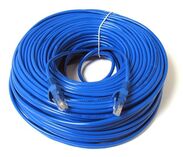 Traditional category runs are cheap, easy to use, and can provide Power over Ethernet (PoE) up to 100 Watts. While copper has always been reliable cabling, it suffers from signal interference as well as length and bandwidth limitations. To keep things short, 4K and 8K video signals carry massive amounts of bandwidth, and copper can only carry these signals short distances, even heavily compressed. Now, more than ever, it makes sense to run fiber alongside traditional category runs. Fear not! Many advancements in fiber production technology have made fiber optic cable safer, more resilient, and more cost-effective. Although currently unable to carry power, fiber optics don’t suffer from EMI or RFI signal interference. Running duplex OM3, allows for 40Gbps Video Signal and 100Gigbit Ethernet up to 100 meters. Traditional 10.2Gbps Video Signals and 10Gigabit Ethernet can be extended further at over 300 meters. In this battle of infrastructure, both is better. Fiber optics help future proof the install for years to come while category cabling can be repurposed for other uses such as lower network signals and PoE solutions. Mastering running both can reduce truck rolls, simplify upgrades, and increase overall job revenue.  This Tech Tip is brought to you by Sam Metiver. Sam has been apart of AVPro tech support for over 2 years. In this time he has become a crucial member of the team taking a special interest in new and upcoming audio video distribution technologies. In his spare time he enjoys music and is a stand up comedian! Look out for more future Tech Tips from Sam.
0 Comments
 This article is apart of a continuing year long series that highlights the people and experience of those that have worked closely with the Imaging Science Foundation for years. If you missed the last opening article from last month start here. We have accomplished much over the years, and I have personally been recognized, awarded and written about for years - that is certainly not the whole story. The untold story is the years of hard work of many other ISF instructors who have made this possible. I have not done this alone, and it is time many of them have been given a voice. This is the first of a year long series where you will here from some of the top calibrators working alongside ISF, we hope you enjoy. -ISF Founder, Joel Silver This month we will hear from Hartmut Berberich...  With the introduction of the first practical projectors and the laser disc, my career with AV installation started. I learned the hard job of installing a CRT projector. Not only the convergence, but also the colors and more give me a headache sometimes. At InfoComm 2001, I learned Mark Hunter's colorfacts system and I was thrilled. This was the first tool in my eyes for better color, not only the test pattern. In 2006 I got my first contact to ISF by a Belgian instructor. In a closer cooperation with a former German instructor, I learned more and more about calibration and used this for my own dealer training also. In Amsterdam in 2008 I met Joel Silver. He was running an ISF class. What a big difference. I got flashed. Here, I learned so much about calibration, which I could use successfully in my dealer training. Since this time Joel and I always meet in Amsterdam or other places in Europe. Either helping him to run the ISF class in Amsterdam or running over the show. Also working together with AVPro team members Jeff, Matt and Loel. In this time, a family of AV enthusiasts was built up and is still working today.  In those days, I was working for a well known European projector supplier and doing training in Europe, Russia, China, and South Asia. Over this whole time I had been in contact with Joel discussing some bigger projects like laser projectors and more. When I left the projector supplier in October 2012 Joel appointed me as an ISF instructor. Wow, I was so so proud about this honor. Now, beneath my normal work, I'm doing ISF training with focus in the German speaking area. Here I'm working together also with Roland Seibt (test chief of the biggest German magazine in the area, Video), a well known specialist on HDR. Working together with bigger suppliers like LG, Samsung or Optoma and broadcasters is a smart advantage and allows us to stay updated on new technology. And last but not least always being in contact with Joel and the team of AVPro, discussing the latest development and trends. Best regards, Hartmut 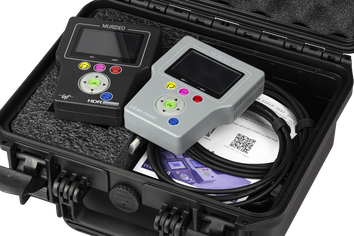 The Murideo SIX G and SIX A Field Test Suite The Murideo SIX G and SIX A Field Test Suite I first became aware of Murideo products during an ISF Level II Training class several years ago. That was where I was first introduced to the Murideo SIX G Signal/Pattern Generator - and its companion - the Murideo SIX A Signal Analyzer. I quickly learned that if I wanted to calibrate a display device accurately and efficiently or effectively troubleshoot a problematic 18Gbps connection chain, the Murideo SIX G and SIX A tandem was the preeminent and indispensable tools to have on hand. To this day, I still use both regularly for performing a variety of test-and-measurement procedures, including signal integrity/verification, troubleshooting - and of course - display calibration. However, I recently started using a new and extraordinarily powerful test-and-measurement tool; and as the saying goes: “There’s a new sheriff in town.”  The Murideo SEVEN Generator The Murideo SEVEN Generator Working closely and in conjunction with major format originators, A/V manufacturers, and standards associations - the SEVEN Generator represents the culmination of intense R&D and unparalleled design excellence. The SEVEN is a formidable, quantum-leap behemoth that packs an amazing array of tools and capabilities. These tools and features warp the SEVEN G into an entirely new universe of A/V Test and Measurement. It literally creates a new market category, and it accomplishes it all without breaking the bank, your bank. The SEVEN Generator is the A/V Test & Measurement Appliance that everyone has been clamoring for, so let’s take a closer look. Below is just a sample of the tools and tests available. ALL IN ONE BOX! VIDEO
AUDIO
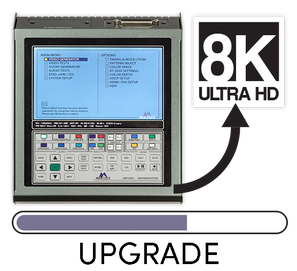 The Murideo SEVEN G is truly GROUNDBREAKING. Whether you are an A/V equipment manufacturer, an OEM, an electrical engineer, a professional calibrator, or an integrator/installer/dealer, you will discover a plethora of features and functions that will:
Finally, the SEVEN G is designed to be FUTURE RESISTANT (it already supports HDMI 2.1 standards and requirements), and it’s not stopping there. This marvel will ultimately play a key role in creating a better future for the A/V industry with vastly improved and more capable and stable products rolling off the assembly line. I hope you will take a closer look at this impressive and powerful A/V Test & Measurement machine and pick one up for yourself! For more in-depth information regarding the capabilities for the SEVEN G, please download the User Manual at www.murideo.com/SEVEN-G. This product review was submitted by industry veteran John Tumbleson. Learn more about John's experience in A/V and what drives his enthusiasm for the industry below.  Before starting my career in the high-tech industry; i.e. Apple, Iomega, Claris etc., I worked in the high-end audio industry where I manufactured my own private label speakers and studio monitors. This was the early to mid 70’s, and I subsequently became involved in the design and installation of discotheques at various restaurants and bars all over the country. A seminal moment for me came in the early 80’s when Sony introduced the Beta HiFi VCR system; and the world of video began to merge with the world of high-end audio. This became the genesis of what we now call “Home Theater” and at that point, I became bitten by the Home Theater “bug”. For many years Home Theater was a “hobby” for me, as my career at Apple and other companies was basically my day job. Then in 2012, I started on a new career path which incorporated A/V system control with residential and commercial projects, but I also became heavily involved with audio and video distribution and calibration. In 2014, while designing a commercial control project, I was introduced to AVPro. At that point - as it is said, our paths crossed, and a few years later, I officially joined AVPro. And as they say: “The rest is history”. My hobby is now my day job. But, I doesn’t really feel like a job, because it’s just too much fun!
Tech Tips are written directly by the Murideo's Tech Support Team. With years of experience seeing every HDMI signal available and working with hundreds of different products, the support team picks up helpful knowledge talking to Integrators, calibrators and electronics manufacturers around the world. This series is aimed to share that knowledge. Here is this month tech tip:
Uncompressed Video distribution can be hard; Passive Copper HDMI cables falter with distance and HDMI extension methods suffer from bandwidth limitations. The Answer? Active Optical Cables of course! What are Active Optical Cables (AOC)? AOC HDMI Cables are uncompressed HDMI Cables capable of running 100 Meters due to 4 Strands of Fiber over the TMDS Lanes which carry Audio and Video signals. BUT not all AOC cables are made the same, just like anything some manufactures will take short cuts in the engineering and development areas. Many AOC cables require external power or worse, use Plastic Optical Fiber used in TosLink cables, a known poor quality fiber type not ready for high bandwidth signaling. These lower quality products will take up space with extra power supplies and often are unable to reach 18Gbps bandwidths, which is need for HDR and high frame rate video. The Solution! The Bullet Train 10K AOC HDMI Ultra High Speed Cable is capable of uncompressed 48Gbps signaling and requires no external power supply. Bullet Train 10K AOC cables use Cleerline SSF OM2 Glass Fiber, and high quality fiber that is safe to terminate in the field. This means if we ever move past HDMI as a delivery method you can always cut off the heads of the cable and easily terminate the 4 individual fiber runs located inside the cable shielding. Not only future proofing your runs but allowing them to serve multiple distribution purposes. This article is apart of a continuing year long series that highlights the people and experience of those that have worked closely with the Imaging Science Foundation for years. If you missed the last opening article from last month start here. We have accomplished much over the years, and I have personally been recognized, awarded and written about for years - that is certainly not the whole story. The untold story is the years of hard work of many other ISF instructors who have made this possible. I have not done this alone, and it is time many of them have been given a voice. This is the first of a year long series where you will here from some of the top calibrators working alongside ISF, we hope you enjoy. -ISF Founder, Joel Silver This month we will hear from Julien Berry... When asked to write up my experiences and memories with ISF, two things came up, one humorous and then something I consider very important, let’s explore both. First Humorous During the very first ISF class I gave in Paris back in 2006, one of my journalist friends noticed that I often wear black clothes. Now this has nothing to do with the fact that Joel always wears black clothes as well. I have always been this way since I was a teenager. I replied that day and still do ever since that it is a very convenient way to ensure a good contrast ratio and black level for the systems I am dealing with. No interferences. It is also a way to advocate dark environment to improve the viewing experience. Now Important
In 2008, I managed to secure an actual movie theater like screening room for the class since I happened to calibrate it in a regular basis. While it might have seemed overkill given the number of attendees, it gave quite an impression with an added bonus of a guided tour of the facility. Nowadays, my class are hosted at the French Sony facilities witch gives me access to professional products in addition to the consumer ones. It has been a great satisfaction and privilege to be able to give a glimpse of the movie making process to people typically associated with the other end of the spectrum, namely the residential AV installers. As the years came by, I also had the opportunity to train tech guys from post production facilities and even movie theater projectionists. The next class shall bring those different kind of people together for the benefit of everyone through exchange of views and experiences. You are able to sign up for my next class today, here are the details, and don’t hesitate to contact me with any questions you might have: Paris France Hosted by Sony France 07/06/2020 –07/08/2020 9am-6pm Julien Berry Website - http://hdvc.fr/ Email - [email protected] By Jason Dustal The first AVPro Academy class of 2020 is officially in the books! Thanks to Andy Spolar at the AWA reps showroom in Chicago, IL where we not only host the class, but also have our brand new AVPro Edge Experience Center. The AVPro Edge Experience center is a great place to visit to see live demos of AVPro Edge and Murideo products such as the Multi-Viewer, the 16x16 matrix switch, extenders, Murideo HDMI test equipment, and more. If you are in the area feel free to stop by and meet Andy. He can give you a live demo of AVPro Edge products and discuss with you about what AVPro can do for you and your customers. AVPro Academy consists of 2 days day of learning the fundamentals of Audio and Video in residential and commercial environments. During day 1 we cover everything from system design to troubleshooting. We dissect HDMI and learn how to troubleshoot small to large distributed A/V systems. Day 2 is all about display calibration and learning the core fundamentals on how to make a display look it’s best. My favorite part of AVPro Academy is always the hands-on activities. The students in this class learned how to use the Murideo tools to test the bandwidth on various HDMI cables, test devices for HDCP compliance, read and emulate EDID, and some valuable troubleshooting skills. Steve from Cleerline stopped by and gave a great demo on fiber optics. The class learned about the great benefits of using fiber as the A/V backbone, and by the end of the class some of the students themselves were terminating fiber in less than a minute. For the rest of the hands on activities we had some great tools and displays to practice with, including LG and Sony OLEDs, a Sony Z9 LED/LCD, JVC projector, a 2x2 video wall, and light meters from Xrite, Klein, Portrait Displays, and Jeti, and of course AVPro Edge distribution and Murideo HDMI testing products.
This particular AVPro Academy class had a wide variety of students…some who were brand new to the A/V industry, and some with as much as 30 years experience. We even had a Home Theater enthusiast who wanted to learn about calibrating his displays at his own home. It is not uncommon to meet students in class with all kinds of different backgrounds. Broadcasters, manufacturers, post production, colorists, writers, and TV reviewers are just some examples. Most of the students stayed for the second day to learn about display calibration. This is a service very near and dear to my heart as I am a videophile who is always chasing the perfect picture. Learning this skill as an integrator is valuable and can set you apart from your competitors. Consumers want to maximize the potential of their system, and learning this skill will help with that. Integrators use the skills they learn to sell better systems and to maximize customer service, which in turn maximizes profits. Everyone who attends day 2 of class gets to learn the basics of ISF calibration, including an introduction to different display technologies, hands on with the tools that are used for calibration, and a temporary CalMAN license so they can go home and practice calibrating. Everyone who attends class and takes the ISF Level 1 exam earns a certificate and is listed on the ISF website as a certified dealer (imagingscience.com/dealers). CEDIA and AVIXA members are also awarded CEUs for attending AVPro Academy. One class down and several more to go in 2020! If you would like more information on class dates and locations, feel free to give us a call at 605.274.6055 or you can always visit our training site at avpro.training. Thanks and I hope to see you in 2020! Find more information at https://www.avpro.training/avpro-academy.html AVPro Academy is an AVIXA and CEDIA certified course, earning you credit hours. |
Third Party Reviews & Articles
SIX-G Generator
Archives
July 2024
Categories |
|
|
© Copyright 2015-2023
Home Contact Us About Us Careers Warranty 2222 E 52nd Street North, Suite 101, Sioux Falls SD 57104 +1 605-330-8491 [email protected] |



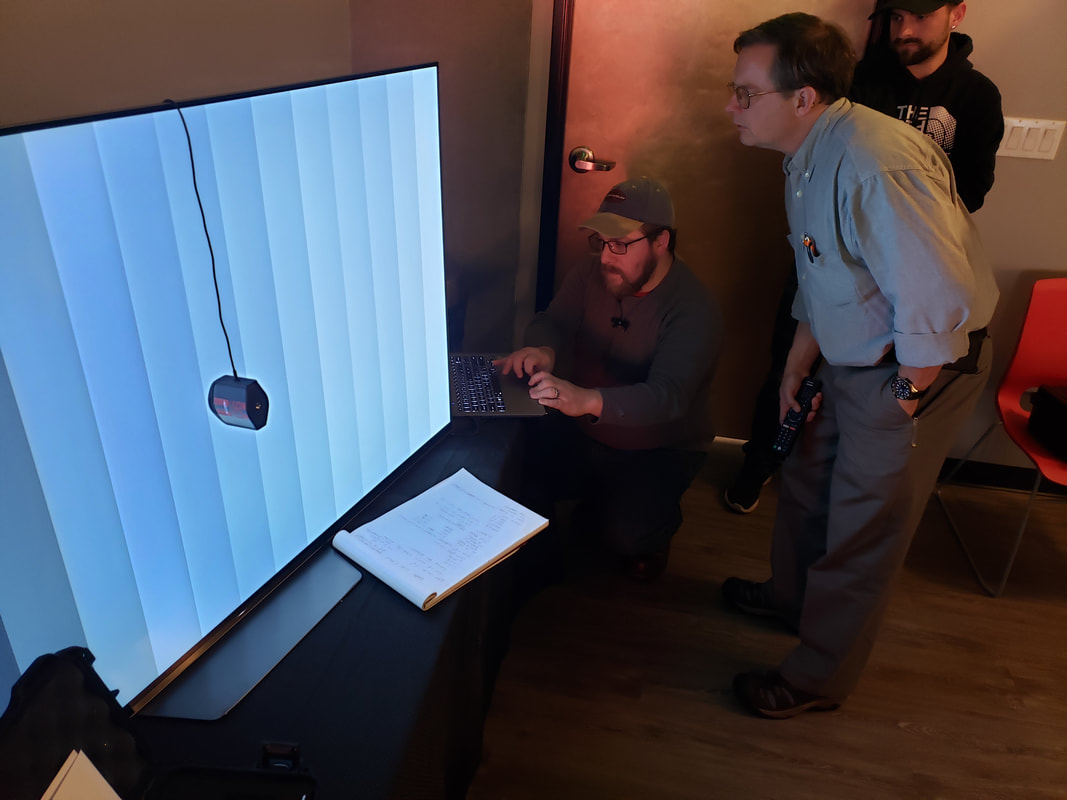









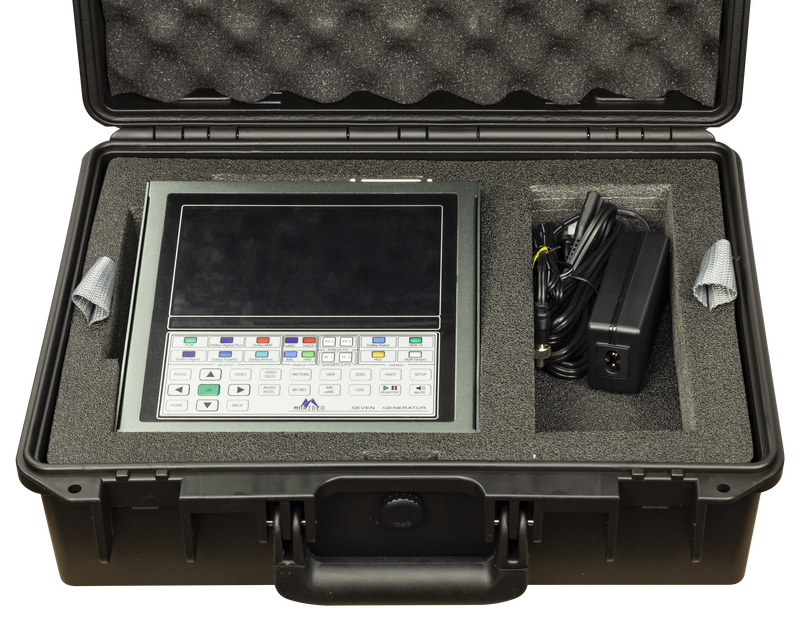




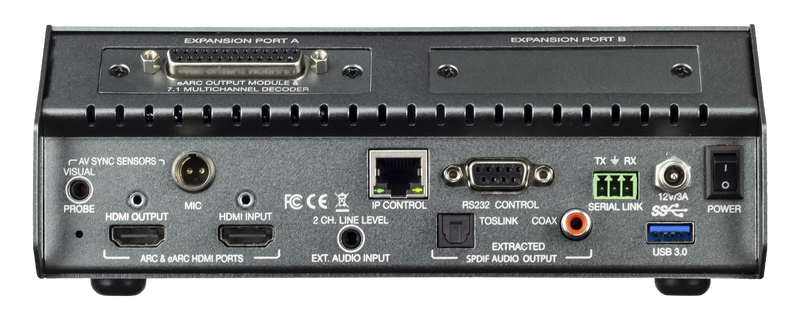
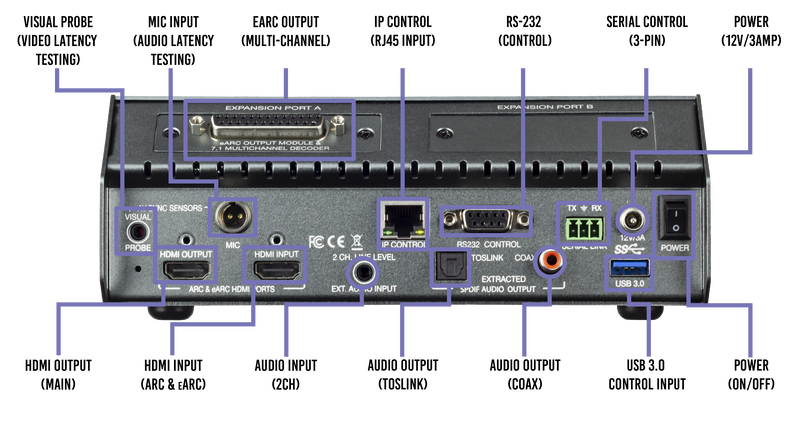




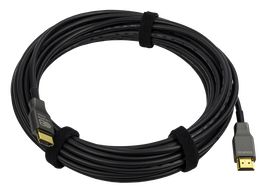




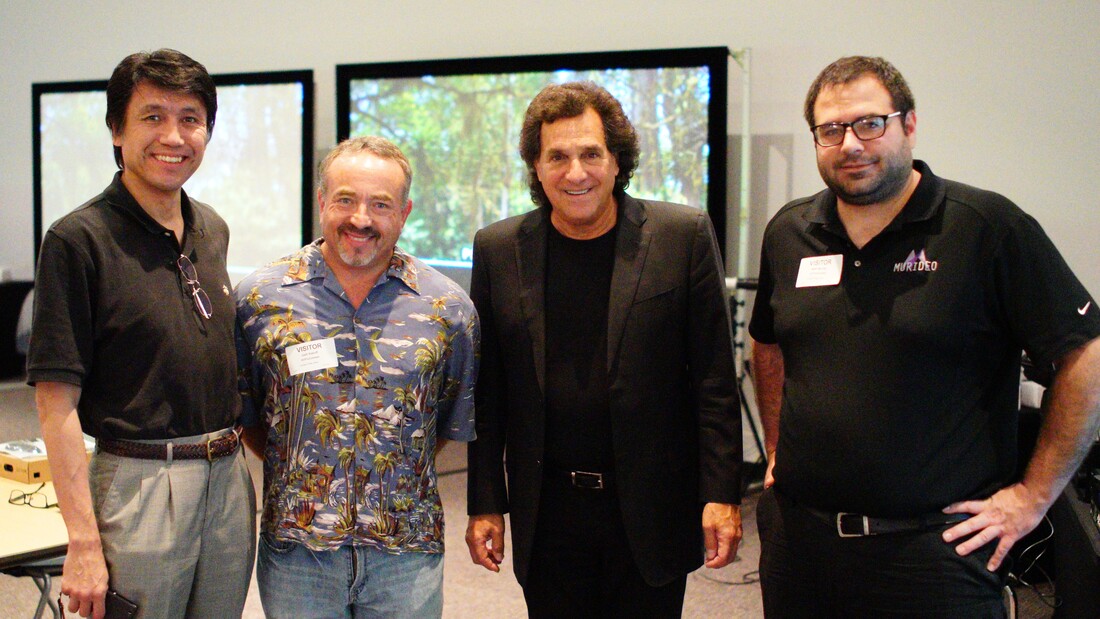



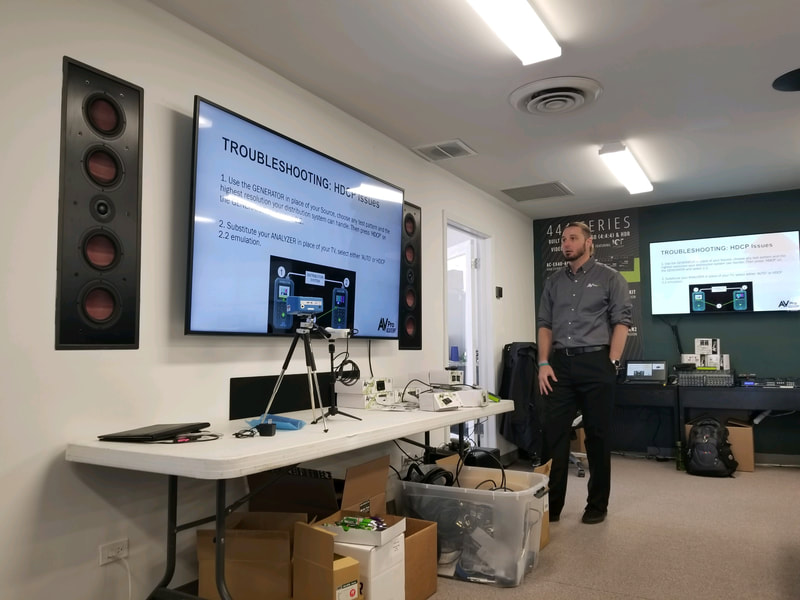

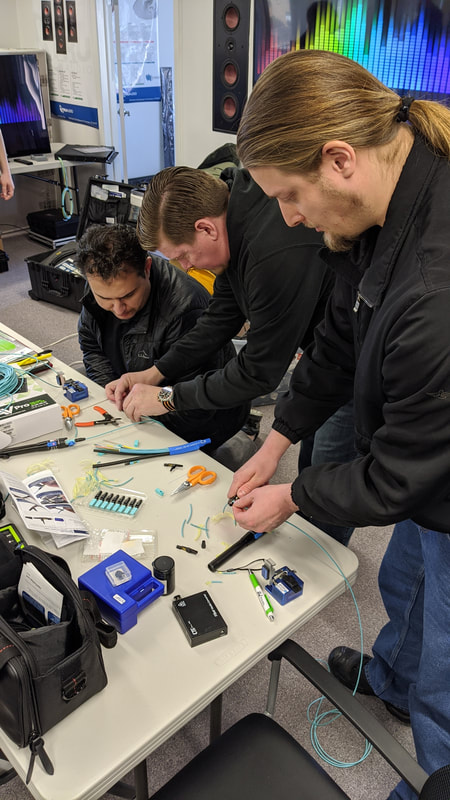
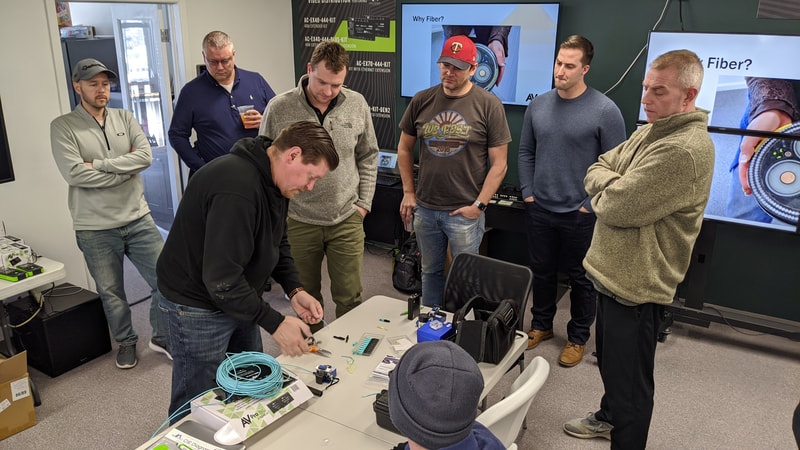






 RSS Feed
RSS Feed